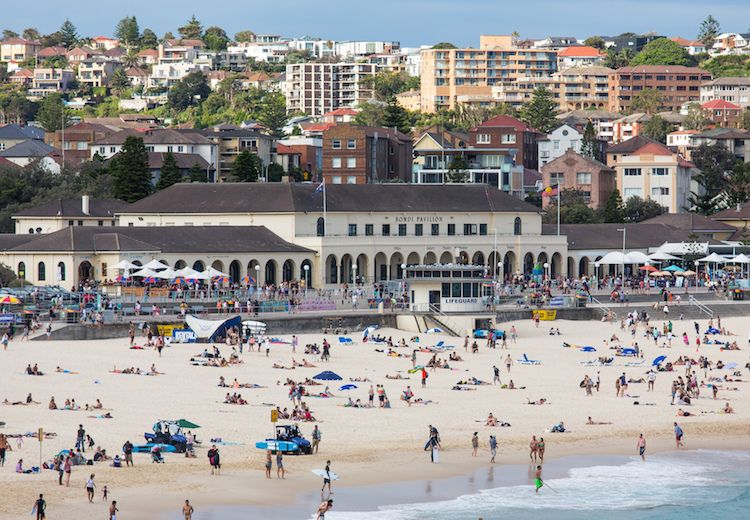Last month I went to my local council meeting. It was the first meeting I’d been to since moving to Bondi three years ago, and the second local council meeting I’ve ever been to.
Recently I’ve been working to make it easier for people to learn about and contribute to local planning decisions through PlanningAlerts. I’ve been speaking with local councillors from around NSW to find out how they think people can impact planning decisions more effectively. So far they’ve all said that people should go to their local meetings. I wanted to see why.
I’m really glad I went along. It seems that important decisions are made in local council meetings–but there are also heaps of problems with them.
My representatives were debating how involved local people should be in guiding a $40 million redevelopment of the area’s best known and much loved public facility, the Bondi Pavilion.

The key issues were the amount of time locals should have to make submissions and what project information they should have access to. There were about 15 people watching the meeting. It seemed to me they were all strongly for extending the submission time and wanted more information about the project. I had no idea about the project before last night.
I’m not familiar with them, but I thought Councillors John Wakefield and Dominic (Darugland Boondi Boondi) Wy Kanak did a good job standing up for greater public involvement. I was pretty shocked by the conservative majority of councillors who made snide remarks and spoke against what seemed like reasonable public participation.
Local council meetings in Australia have a reputation for being ineffective and boring. This reputation is totally off the mark in my area. Important issues and proposals were debated that will impact this area and it’s people. There were some things however that made it hard to understand what was going on.
Problems
When I first arrived there was a lot of confusion and bickering about what the proper meeting procedure was. This was boring and frustrating. Councillors were talking over each other, brandishing the meeting rules document in hand. One kept interrupting the others only to then realise they were misreading the rules. These interruptions made the actual debate harder to follow for both the audience and councillors. Procedure is meant to help meetings run well, but it seemed more like a prop for political theatre here.
There was constant miscommunication about what was being said throughout the meeting. It seemed to me that there were a few causes for this:
- Councillors spoke in the language of stuffy government procedure rather than just saying what they meant. This made it hard for everyone to nail down the precise point at hand—even the other councillors.
- Mayor Sally Betts, who was running the meeting, kept leaning over to talk to council staff while people were speaking. This meant that they had to constantly reconfirm the questions and motions being raised. People around me in the audience kept shaking their heads, “they’re not even bloody listening”.
- The room had really bad acoustics that muffled what was said. This problem was made worse by councillors having cross conversations while motions were being put forward. The councillors also sat facing away from the public audience, projecting their voices away from them.
Accessibility and participation
There were also problems with the accessibility of Council information and blockers to participation.
Even in the room it was difficult to tell how councillors were voting on motions. This is the key job we elect these people to do, yet most votes are held ‘on the voices’. This means that how each councillor voted is not recorded in the meeting minutes.
This is a major problem of accountability for elected representatives at every level of government in Australia. Micaela Ash recently wrote a great post detailing this problem in our Federal Parliament.
You might think that at least the people at the meeting would be able to tell how individual councillors voted, but it wasn’t clear at all. The councillors sit facing away from the audience, so when they call out their vote you can’t always distinguish their position.
On the issue of the Bondi Pavillion redevelopment, Councillor Dominic Wy Kanak moved that a detailed breakdown of the costing and a completed feasibility study be released. In a major redevelopment of one of the area’s most significant built assets, wouldn’t you expect that this kind of detail of the plan would be available already?
One of the council staff stood to explain that this wouldn’t be possible. Releasing such detail might result in the council getting a worse deal on the project. The explanation of why this would happen wasn’t clear to me—but I think it’s beside the point.
A public institution like a local council isn’t like a business. It works on behalf of the public and has a bunch of special processes to ensure it acts in the public interest. These include having an elected council and holding open public meetings. These measure aren’t cheap to run, but are seen as a core cost of council business.
Transparency in democratic institutions isn’t a “nice to have”. If it costs more for the public to get reasonable detail of the plan they need to judge, then surely those are basic, core costs. They might actually find that transparency enables locals to better direct resources, cutting waste and increasing effectiveness.
In just this one meeting you could see barriers to people understanding what their local elected councillors are planning and doing; barriers to acting in local democracy. I was impressed by a few councillors who spoke for the public’s right to know and direct their council. I think I’ll head back this month and see what else I can learn.